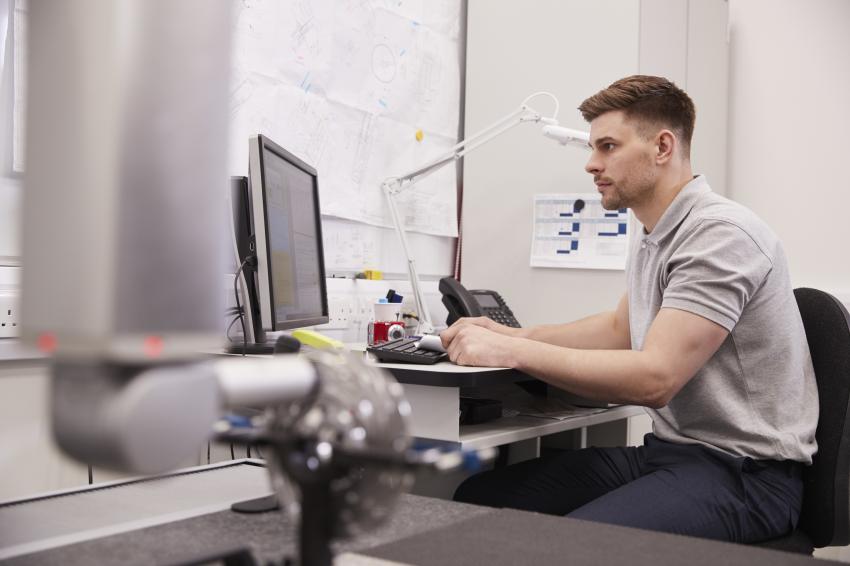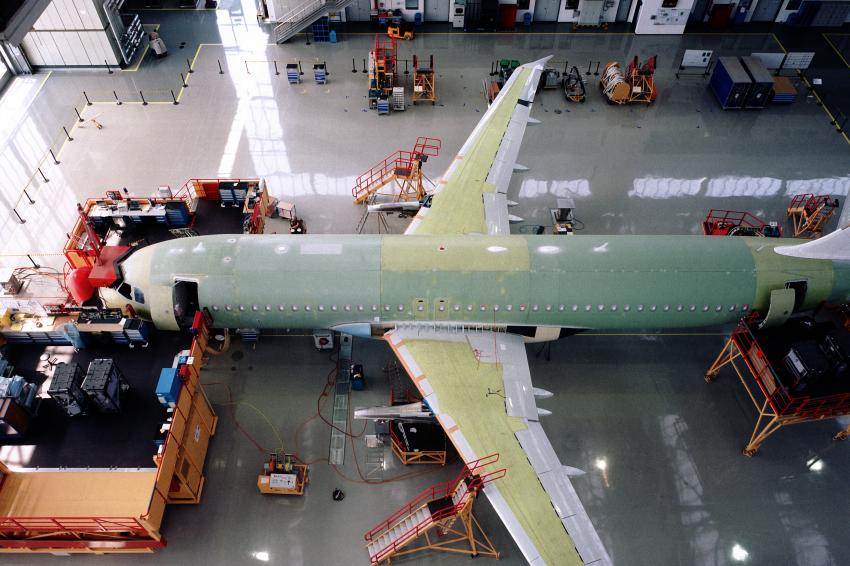Ensure Product Quality, Improve Diagnostics, and Accelerate First Article Inspections
05.05.2020 -
How can the automotive and aerospace industries ensure product quality without impacting productivity, improve diagnostics while limiting production downtime, and accelerate first article inspections in a context of limited resources and strict requirements for high accuracy and resolution?
Products built in the automotive and aerospace industries are made of hundreds of components manufactured by different suppliers who are based in diverse locations and use varied manufacturing processes. Once assembled, all of the components must fit together and align correctly to produce viable products free from defects that could distort their performance and ruin their efficiency.
If irregular gaps between a door and car body or between the panels on an aircraft fuselage are reported by quality control, production is stopped, and quality assurance is called for inspection. Not only must they identify the root cause and fix quality problems accurately, but they must also deliver their diagnostic quickly, as production is waiting. Moreover, these inspections can occur on thousands of parts and products, all with different sizes, surface finishes, levels of complexity, and geometries.
This article aims to highlight how quality control and quality assurance specialists working in the automotive and aerospace industries can ensure product quality without impacting productivity, improve diagnostics while limiting production downtime, and accelerate first article inspections in a context of limited resources and strict requirements for high accuracy and resolution.
Automotive Industry
The volume of vehicles that the major automotive manufacturers produce every hour, every day, and every year is astonishing. A century after Henry Ford’s eureka moment, technological progress made an exponential leap that has empowered an incredible collaboration between humans and machines, resulting in the creation of 115 cars per hour.
The quality control and quality assurance processes, however, must keep pace with this production capacity so that yield is not slowed (when samples are being inspected) and downtown is limited (when problems must be located on the line and fixed quickly).
Quality Control (QC)
QC is essential to identify any inaccuracy that could compromise subsequent steps in the production line. In high volume production, sampling parts are brought to the CMM’s queue for inspection.
Coordinate measuring machines (CMMs), which are very accurate but take time to operate, must be handled by trained and experienced employees - a rare find in today’s job market. Since this metrology equipment is difficult to access and generally overloaded by all kinds of tests and controls, bottlenecks are common and often lead to productivity issues, even if the inspected parts comply with the requirements. In short, production waits for the validation of the parts, which wait for the availability of the CMM.
Is it possible to relocate certain inspections in order to offload the CMM?
Quality Assurance (QA)
When problems are raised by QC or production, QA specialists take action, performing the root cause analysis (often under pressure because production has been stopped) and implementing corrective actions quickly to limit downtime.
Through this process, they have to discover why, for example, there’s an irregular gap between the car’s door and the body, a headlight doesn’t fit in a car’s frame, or a closed hood has a bumpy shape.
As these inspections can occur on thousands of parts, all with different sizes, shapes, and surface finishes, is there a tool more suited for QA that could employ the benefits of 3D visualization and colormapping to quickly identify discrepancies?
First Article Inspection (FAI)
As its name suggests, a FAI requires the complete inspection of parts prior to the start of production. Since all features must be measured and verified, it takes time—a lot of time— especially if the complete FAI is performed on the CMM.
Is it possible to redirect less critical measurements to another metrology instrument and keep only the crucial dimensions for inspection on the CMM?
Aerospace Industry
From ribs and stringers to landing gears and engines, airplanes are made up of millions of components produced by thousands of companies located in many different countries around the world. As the aerospace industry relies on a myriad of suppliers and subcontractors that must build various complex parts, often with specialized finishes and treatments, quality must be ensured throughout the entire supply chain while maintaining the production lead times and keeping costs under control.
Because performance criteria and tolerances are even tighter in aerospace, critical features must be controlled at the CMM, which must be programmed and handled by specialized workers. As older employees move toward retirement, many companies worry that there are not enough resources with the right skills in the workforce. Lack of experience and insufficient training for operating CMMs challenge producers’ ability to perform all of the inspections required by industry standards.
QC must be accurate since the impact of a failure is always greater for the aerospace industry. Even if the volume of production is smaller, the costs of potential damage are higher. The Boeing 737 Max’s saga illustrates these important consequences, as media have reported that grounding the aircraft will cost American and Southwest Airlines more than $1 billion in lost revenue and efficiency.[2]
Therefore, accessibility to the CMM is important to guarantee the inspection of critical dimensions. If the CMM is unavailable due to bottlenecks generated by controls on less important features, it could impact the part quality, as well as the production lead time and manufacturing costs.
Thus, not only must the CMM be available for QC, but also it must be vacant to perform FAIs, particularly on critical dimensions of new parts that will be industrialized. The more new parts there are (as is often the case with new programs), the more FAIs there are to execute and the more CMM time—and human resources to operate the CMM—must be available, unless there is an alternative solution that is simpler to use and fairly accurate for less critical dimensions.
Alternative Solution to the CMM
To ensure product quality, improve diagnostics, and accelerate FAIs, the automotive and aerospace industries need an alternative measuring solution—to support the CMM—that can provide QC and QA professionals with accuracy, speed, portability, versatility, and simplicity.
Accuracy: The measurement quality is essential to take on inspections previously assigned to the CMM. Additionally, the alternative solution must provide accurate, high-resolution, and repeatable results regardless of the measurement setup quality, the instabilities of the environment, and the user’s experience level.
Speed: Since the CMM is slow to operate and takes time to program, the alternative solution must perform faster. It should also offer quick setup, real-time scans, and ready-to-use files, allowing QA and QC professionals to save precious acquisition and analysis time, which will accelerate QA analysis and FAIs while limiting production downtime.
Portability: As investigations often occur directly on the production line, QA specialists must be equipped with a device capable of operating in various environmental conditions without affecting performance or impacting accuracy. Unlike the CMM, which must be kept in a controlled environment, the alternative measuring instrument must have the flexibility to be brought wherever the part is.
Versatility: Moreover, the alternative solution must have the capacity to measure various part sizes and shapes—regularly seen in the automotive industry—and complex geometries and surface finishes, such as polished aluminum, which are common in the aerospace industry.
Simplicity: Finally, the alternative measuring instrument, in comparison with the CMM, must be easier to use and not require programming time to enable people with no special training, skills, or experience to operate it.
Conclusion
Accurate, fast, portable, versatile, and easy-to-use 3D scanning solutions, such as Creaform’s MetraScan 3D line-up, are the prescribed alternative solution for QA and QC professionals in the automotive and aerospace industries who want to fix quality issues and deliver approved quality parts quickly and efficiently.
By adding a metrology-grade 3D scanner to the measuring instrument kit, delicate inspections of high-tolerance features can be assigned strictly to the CMM, while all remaining controls can be redirected to the MetraScan 3D. This action not only ensures product quality through the supply chain, but also improves diagnostics on reported quality issues and accelerates FAIs in a context of limited resources and strict requirements.
Contact
Ametek GmbH - Division Creaform Deutschland
Meisenweg 37
70771 Leinfelden-Echterdingen
Germany
+49 711 185 680 30
+49 711 185 680 99









